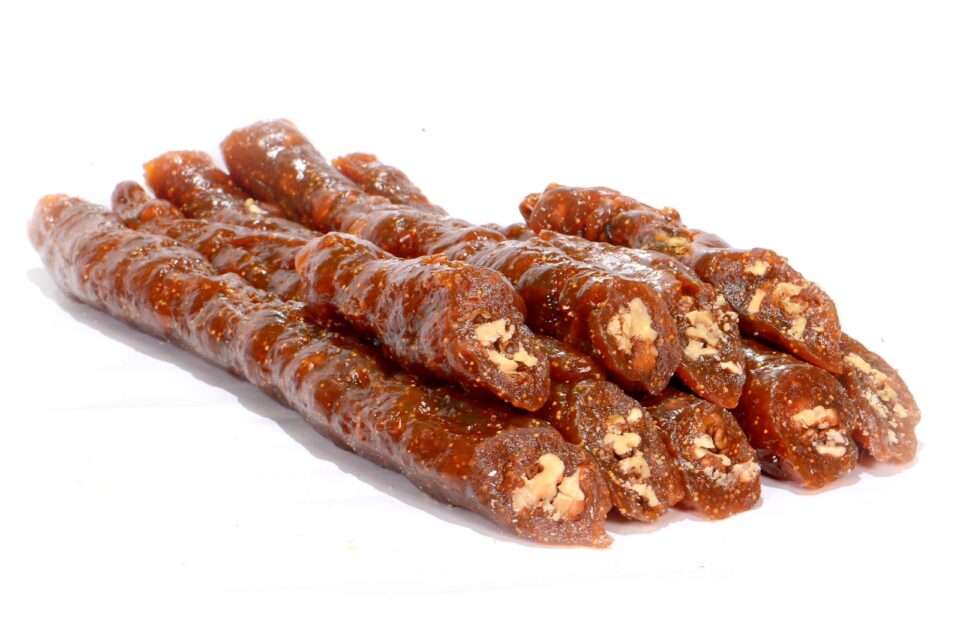Although it requires some effort, the process is enjoyable and straightforward. The instructions provided are for making Basuq using 10 kg or more of grapes, but I’ll focus on 10 kilograms in this guide.
Start by placing 10 kg of grapes into a large pot or a clean basin. Thoroughly crush the grapes, then use a flour sifter to separate the moist pulp from the juice. Next, add approximately 100 grams of “gili doshaw” (grape clay) to the mixture. Grape clay is found in the mountains, and people who live in these areas often know where to find it. It may also be available at markets that specialize in Kurdish herbal remedies. This clay helps to counteract the acidity of the unripe grapes, making the mixture sweeter. Let the mixture sit for ten minutes, then strain it again.
Once strained, pour the liquid back into the pot and bring it to a boil. As the liquid begins to foam, use a sieve or spoon to remove the foam. Let it boil for an additional five minutes. Turn off the heat and allow the liquid to cool slightly. This step is crucial and should not be skipped. When the temperature drops to about 70°C, add 250 grams (a quarter of a kilogram) of fine flour, stirring thoroughly to ensure that the flour doesn’t clump together.
This is the most critical stage, requiring constant attention. The mixture will begin to thicken, resembling pudding as it heats. Use a long spoon (like a large yogurt spoon) to stir it continuously. Do not turn off the heat as it thickens; keep stirring without interruption, or the mixture will burn and stick to the bottom of the pot. This process requires continuous stirring for about an hour. You’ll notice the mixture starts to pull away from the sides and becomes very thick, like liquid chocolate. To check if it’s ready, you can test a small amount by letting it cool slightly to see if it solidifies.
Once the mixture is ready, turn off the heat and pour it into a tray (or two if necessary). For added flavor, you can mix in a cup of walnuts before pouring the mixture into the tray. If you have previously strung walnut kernels on a thread and removed the thread afterward, the sweet is referred to as “sujuq” instead of “basuq.” Alternatively, you can sprinkle walnuts on top of the mixture after pouring and lightly press them in.
After allowing the Basuq to sit in the tray for ten hours, use a knife to cut it into small squares. To improve air circulation and speed up the drying process, you can turn the pieces over or transfer them to another tray or a wooden breadboard after a day of drying. Leave the pieces to dry for a few days, ideally exposed to the sun to accelerate the process. Once dried, the Basuq is ready to eat and is truly delicious.

